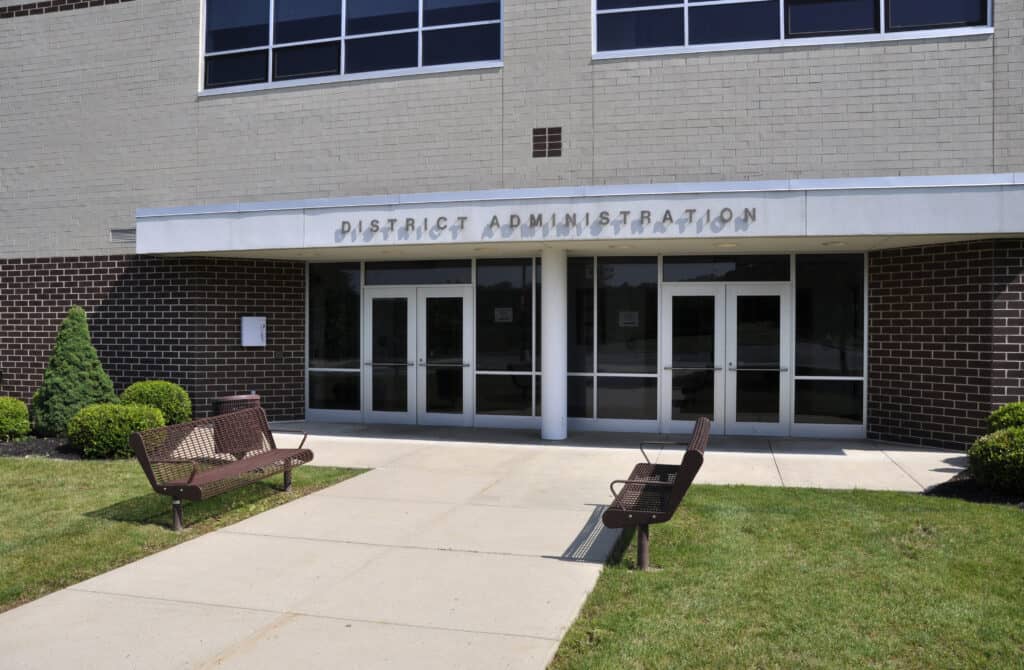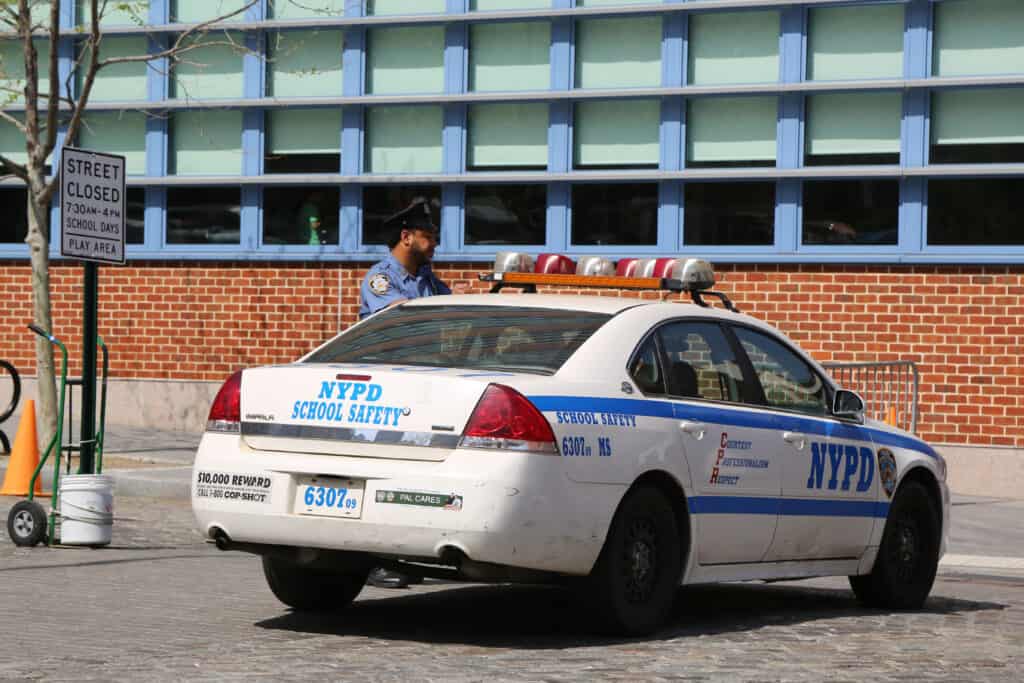The importance of school-based law enforcement continues to be a vital topic in the pursuit of safe and secure educational environments for students, faculty, and the community. One of the organizations leading the way in researching best practices and implementation strategies for the integration of law enforcement in schools is the Texas School Safety Center (TxSSC). In their scholarly research, the TxSSC provides valuable insights and actionable steps to develop a successful framework for school-based law enforcement initiatives.
A key finding from the TxSSC’s completed project on School-Based Law Enforcement Framework emphasizes the need for comprehensive training and collaboration between educational institutions, law enforcement officers, and stakeholders. Officers’ responsibilities within schools go beyond traditional policing roles, encompassing aspects of teaching, counseling, and relationship-building with students and staff. By understanding the unique challenges of school environments and developing collaborative relationships, school-based law enforcement officers can foster safer and healthier learning communities.
Background on TxSSC
The Texas School Safety Center (TxSSC) plays a crucial role in enhancing the safety of schools throughout Texas. They conduct extensive research to develop frameworks, best practices, and guidelines for school-based law enforcement agencies to follow.
Purpose and Role of TxSSC
The TxSSC’s primary objective is to serve as a clearinghouse of resources, training, and assistance for schools to enhance safety measures. This is achieved through their focus on school-based law enforcement, the development of school safety plans, and initiatives that emphasize both the physical and psychological safety of students and staff. One such project is the School-Based Law Enforcement Framework, which aims to identify best practices and effective strategies for integrating police officers into educational environments.
Funding and Partnerships
TxSSC relies on various entities, such as the National Institute of Justice (NIJ), to provide financial support and partnerships for their numerous projects and initiatives. These collaborations enable TxSSC to access valuable resources, expertise, and networks, which in turn facilitate the creation of more impactful and far-reaching programs to enhance school safety across the state. The NIJ’s grants help fund research initiatives on the role of law enforcement in public schools. This in-depth study helps to further develop accurate descriptions of the current involvement of law enforcement in schools and provides invaluable insights to stakeholders.
The TxSSC’s completed School-Based Law Enforcement Framework project has shown the importance of proper integration of police officers into educational environments. By leveraging their research, resources, and collaborative efforts with entities like the NIJ, TxSSC continues to impact and improve school safety, ensuring a secure and conducive environment for students and staff throughout Texas.
School-Based Law Enforcement Project
Key Research Components
The TxSSC’s completed project on School-Based Law Enforcement Framework focused on understanding the effectiveness and best practices for integrating police into educational environments. This research was conducted with the aim of sustaining safe and healthy learning environments for school communities. Various factors were taken into consideration, such as the presence of school police, their role in schools, and the impact on student safety and behavior.
Major Findings
The study found that integrating police into educational environments can positively contribute to school safety. However, it also identified areas of improvement and best practices:
- Role clarity: School-based law enforcement officers (SROs) and school staff must understand and agree upon the roles and responsibilities of SROs within the school setting. This includes defining the scope of work, expectations, and goals for SROs to ensure effective collaboration with school personnel.
- Training: SROs should be equipped with appropriate knowledge and training related to youth development, mental health, conflict resolution, and cultural competency. This ensures that officers can effectively respond to various situations that may arise within a school context.
- Relationship-building: SROs should prioritize building positive relationships with students, staff, and the greater school community. This enables them to address school safety concerns proactively, while also establishing trust and promoting open communication among stakeholders.
- Data-driven decision-making: Utilizing data related to school safety trends and incidents can help inform the development and implementation of policies and practices for school-based law enforcement. This approach enables schools to adapt based on evidence rather than relying solely on intuition or anecdotal evidence.
In conclusion, the TxSSC’s research on School-Based Law Enforcement Framework has provided valuable insights into maximizing the effectiveness of law enforcement presence in schools. By implementing evidence-based best practices, schools can create a safe and supportive learning environment for students and staff alike.
Framework for School-Based Law Enforcement
Goals and Objectives
The Texas School Safety Center (TxSSC) conducted a research project on School-Based Law Enforcement Framework with the aim of understanding the best practices for integrating police officers into educational environments. The main objectives of this project were to enhance school safety, maintain a healthy learning environment, and develop a collaborative community partnership between law enforcement and school districts.
Components of the Framework
The School-Based Law Enforcement Framework identified by the TxSSC encompasses several key components to ensure a successful implementation of school resource officers (SROs) within the educational environment.
- Collaborative Planning and Implementation: Schools and law enforcement agencies need to work together in the planning and implementation stages by creating memoranda of understanding (MOUs) that outline the roles and responsibilities of each party. This would clearly establish the SROs’, school administrators’, and district’s expectations while integrating police officers into the school environment.
- Training and Professional Development: Effective school-based policing requires specially trained SROs who have the knowledge and skills to deal with various situations that may arise in a school setting. SROs should receive training on topics such as understanding adolescent behavior, de-escalation strategies, and conflict resolution, among others.
- Building Trust and Positive Relationships: SROs should engage in positive interactions with students, staff, and the community at large to build trust and foster a sense of security. This involves being visible and approachable, participating in school events, and serving as a trusted resource for the school community.
- Maintaining a Safe and Secure Environment: The primary responsibility of SROs is to ensure the safety and security of the school campus. This includes responding to and preventing incidents, assessing potential threats, and implementing appropriate safety measures to create a secure learning environment.
- Data Collection and Evaluation: To assess the effectiveness of the School-Based Law Enforcement Framework, schools, and law enforcement agencies should collect data and carry out regular evaluations. This data could include information on incident reports, referrals to the juvenile justice system, and perceptions of safety among students and staff.
By implementing the above components, school districts can effectively integrate police officers into their educational environments, thereby enhancing overall safety and fostering positive community relationships.
Best Practices for Integrating Police into Educational Environments

Collaboration with School Administrators
Effective school-based law enforcement begins with strong collaboration between police officers and school administrators, such as principals. By working together, they can develop a shared understanding of the role officers will play in promoting a safe and supportive school environment. Collaborative efforts might include joint planning, goal setting, and communication strategies that ensure transparency and accountability across both the school and law enforcement communities.
Officer Training and Certification
Officers working in educational settings must be equipped with the necessary training and certification to handle the unique challenges of the school environment. The TxSSC study suggests that specialized training in areas such as child development, conflict resolution, and implicit bias may benefit officers working with students. Additionally, certification through programs like the National Association of School Resource Officers (NASRO) ensures that officers receive ongoing professional development and adhere to best practices in school-based law enforcement.
Role of School Resource Officers
School Resource Officers (SROs) often serve as the primary liaison between law enforcement and the school community. According to research, their roles may include providing security, serving as a resource for students and staff, and delivering educational programs on topics such as substance abuse prevention and personal safety. A well-defined and balanced role for SROs can contribute to positive relationships between students and officers, fostering a safe and supportive learning environment for everyone involved.
Challenges and Suggestions for Improvement
Coordination and Communication
One of the challenges identified by the TxSSC’s research on School-Based Law Enforcement Framework is the need for better coordination and communication between school staff and police officers. To address this issue, schools and law enforcement agencies must collaborate closely, share information about emerging concerns, and align their goals for school safety.
Some strategies to improve coordination and communication include:
- Establishing regular meetings between school administrators, teachers, and law enforcement representatives
- Developing joint protocols for addressing safety threats
- Encouraging ongoing dialogue between students, school staff, and police officers to build trust and rapport
Training and Resources
Another challenge highlighted in the TxSSC’s research is the need for more comprehensive training and resources for school-based police officers. Adequate training ensures that officers are aware of and able to effectively respond to the unique dynamics of educational environments. To address this issue, law enforcement agencies should invest in specialized training programs for their school-based officers, focusing on areas such as:
- The role of law enforcement in school settings
- Conflict resolution and problem-solving strategies
- Identifying and addressing potential safety hazards
- Understanding and managing students’ behavioral and mental health issues
In addition to training, schools and law enforcement agencies should work together to allocate appropriate resources for school-based law enforcement programs. This might include allocating funds for additional personnel, equipment, and technology tools that support a safer school environment.
By focusing on improving coordination and communication, as well as providing adequate training and resources, school-based law enforcement programs can overcome challenges and contribute to the development of secure and supportive educational environments for all students.
Conclusion
The Texas School Safety Center (TxSSC) conducted a comprehensive study on the School-Based Law Enforcement Framework, providing valuable insights on integrating police into educational environments. The findings emphasize the importance of a collaborative approach between law enforcement and school administrations, which is essential for the overall safety and well-being of students and staff.
One major takeaway from the research is the clear emphasis on effective communication and coordination between schools and law enforcement officers. By fostering open dialogue and regularly sharing information, schools can pave the way for police to better understand the campus environment, its needs, and challenges.
Additionally, the study suggests that maintaining a strong focus on training is crucial for effective school-based law enforcement. Officers should be well-educated on issues related to adolescent development, mental health, and crisis intervention, as well as de-escalation and conflict resolution strategies. This specialized training can greatly enhance their ability to interact with students and properly handle situations that may arise in a school setting.
Another essential element highlighted in TxSSC’s research is the importance of establishing a positive and visible police presence on campus. Law enforcement officers should engage with students and staff through informal interactions, participating in school activities, and being a proactive part of the school community. This approach can help build trust and rapport between officers, students, and staff, ultimately creating a safer and more inclusive school environment.
In summary, the findings from the TxSSC’s School-Based Law Enforcement Framework project emphasize the significance of collaboration, communication, training, and positive presence to ensure the successful integration of police into educational settings. By implementing these best practices, schools and law enforcement agencies can work together to create a secure and supportive environment for all students and staff.
Frequently Asked Questions
What are the best practices for integrating police into educational environments?
Integrating police into educational environments requires collaboration between schools and law enforcement agencies. Establishing clear roles and responsibilities, providing specialized training for School Resource Officers (SROs), and developing strong communication channels are essential for a successful partnership. Additionally, schools should implement comprehensive safety plans that include law enforcement involvement and consider the unique needs of their communities to create a safe learning environment1.
How does School-Based Law Enforcement impact student safety?
School-Based Law Enforcement can contribute to student safety by providing a visible security presence, fostering relationships with students, and maintaining order in the school environment. SROs play a critical role in detecting potential threats, addressing situations before they escalate, and serving as a liaison between the school and local law enforcement2. However, the impact of SROs on student safety can vary based on factors such as their training, relationship with the school community, and the specific safety needs of the school.
What are the key insights from TxSSC’s research on School-Based Law Enforcement Framework?
TxSSC’s research on School-Based Law Enforcement Framework emphasizes the importance of collaboration between schools and law enforcement agencies to address the unique safety needs of each school community. The research highlights the roles of SROs in maintaining school safety, facilitating communication between schools and law enforcement, and providing a resource for students and staff3. Best practices include collaboration, specialized training, and clear communication channels to ensure the most effective implementation of School-Based Law Enforcement programs.
How do communication skills play a role in the effectiveness of school resource officers?
Effective communication skills are crucial for SROs to build strong relationships with students, staff, and the school community. This helps create a supportive and safe environment where students feel comfortable sharing concerns or reporting potential threats. Strong communication also enables SROs to address conflicts calmly, diffuse tense situations, and maintain order within the school setting4.
What are the pros and cons of having police officers in schools?
Having police officers in schools can provide several benefits, such as increased security, positive role models, and quicker response to emergencies. SROs can also facilitate communication between schools and law enforcement agencies, and help address crime and violence issues within the school setting5. However, there are potential drawbacks, including the risk of over-policing, criminalization of minor student misbehavior, and negative impacts on school climate and student trust.
How can police promote a safe learning environment in schools?
Police can promote a safe learning environment in schools by establishing positive relationships with students and staff, participating in the development of comprehensive school safety plans, and providing security during emergencies. In addition to their enforcement duties, SROs can also contribute to educational programs, such as drug prevention and anti-bullying initiatives, to help students develop the personal skills needed to navigate challenging situations.
Is your school as safe as it could be? Risk Strategy Group can help you find out. Our expert consultants are all certified by the Texas School Safety and Security Consultant Registry and are skilled in conducting comprehensive safety and security audits.
We can identify potential vulnerabilities, offer actionable recommendations, and help you implement robust security measures. Don’t wait for a crisis to reveal the gaps in your school’s safety plan. Contact Risk Strategy Group today and let’s ensure your school is a safe learning environment for everyone.
Footnotes
- https://www.ojp.gov/pdffiles1/nij/grants/211676.pdf ↩
- https://ies.ed.gov/ncee/edlabs/regions/west/relwestFiles/pdf/4-2-3-20_SRO_Brief_Approved_FINAL.pdf ↩
- https://txssc.txstate.edu/research/scholarly-research ↩
- https://apps.esc1.net/ProfessionalDevelopment/uploads/WKDocs/166910/6-10-21%20Participant%20Copy.pdf ↩
- https://www.ojp.gov/pdffiles1/nij/grants/211676.pdf ↩
- https://www.secretservice.gov/sites/default/files/reports/2020-10/USSS_NTAC_Enhancing_School_Safety_Guide.pdf ↩








